There are so many options for bikes these days that the vast majority of folks should have few issues finding exactly what they want off-the-shelf from a mainstream brand. Style, size, color, handling, fit; you name it, it’s probably already out there. And if it isn’t? Well, there also’s a healthy bespoke industry out there waiting in the wings to provide you with custom geometry, a unique paint job, special build kit, or what have you.
Fat bikes, however, occupy a particularly curious little corner of the cycling world with their gargantuan 4-5”-wide tires inflated to just 1-3 psi.
Primarily designed for winter riding on snow, they were a hot segment about a decade ago, with nearly every major brand including at least one model in their catalog, and bigger labels even offering multiple models in both carbon fiber and aluminum. Trek, Specialized, Giant, Scott, Cannondale, Kona, you name it. Everyone wanted in on the action.
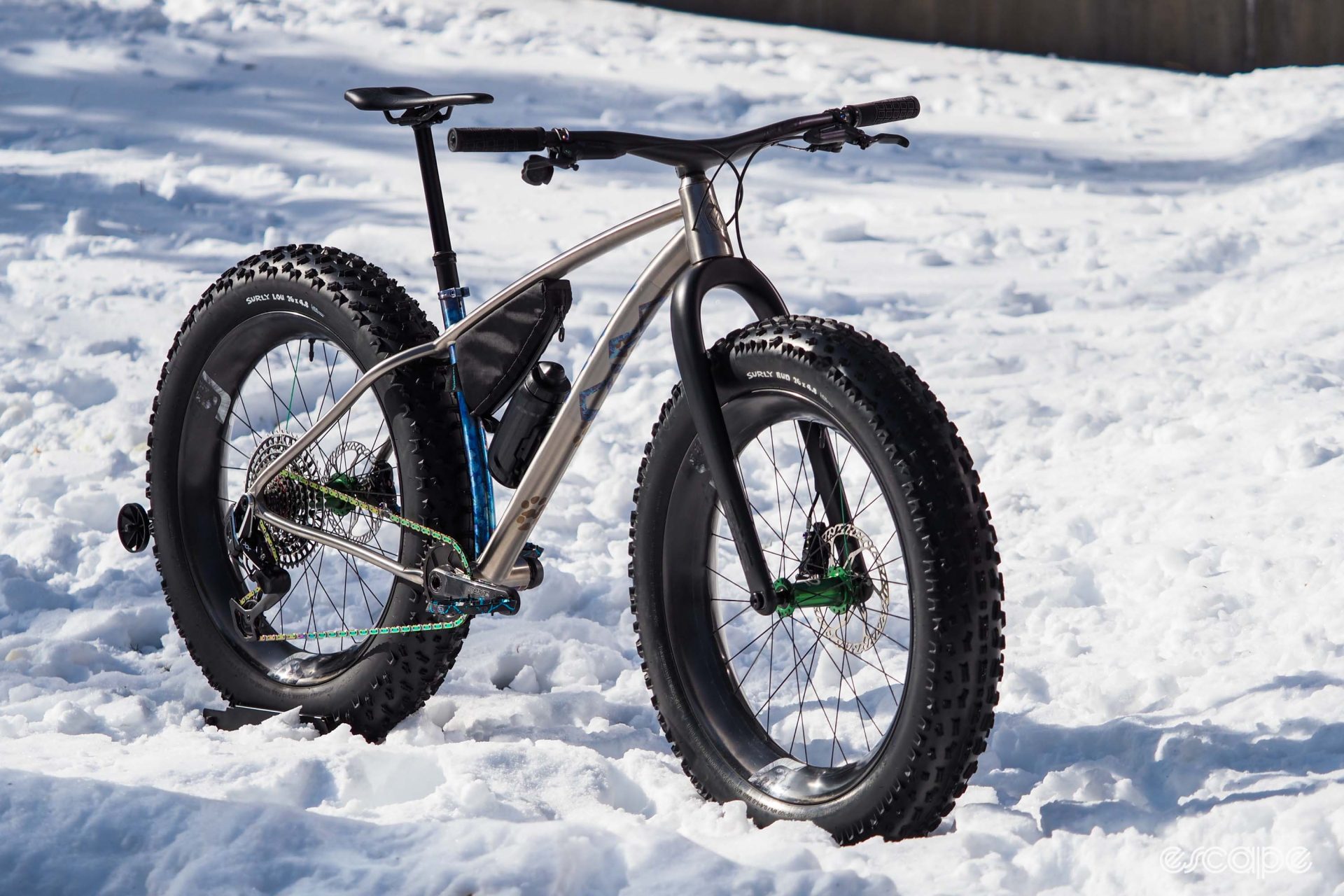
Given the right conditions – the right amount of snow coverage, a minimum level of compaction, and so on – fat bikes are riotously fun. But it also didn’t take long for many buyers to realize those conditions could be elusive, and regardless of what the diehards say, they’re nowhere near as fun on dirt as so-called “skinny bikes.” It also didn’t take long for bike brands to realize that fat bikes and gear ridden in wintertime conditions basically lasts forever for most riders, so the usual upgrade-and-replace cycle didn’t apply.
Not surprisingly, the range of offerings has contracted dramatically since then, and as a result, there hasn’t been nearly the rate of technological development we’ve seen in the rest of the mountain bike world. Especially when it comes to geometry, most of the remaining fat bikes today differ little from what was available a decade ago.
But what if you’re one of the diehard fat bike riders out there who wants something with more progressive handling like your regular mountain bikes? And what if you specifically want that modern geometry in a frame made of titanium? Well, if you’re Colorado-based computer programmer and quantitative analyst Dan Harvey, you design your own from scratch and build a bike company around it, too – and maybe tackle a few math problems in the process.
Ok, so maybe not quite from “scratch”
Dan bought his first fat bike – a Twin Six Standard – in 2016, and while he liked it (or perhaps more the idea of it), it wasn’t quite what he was hoping for. It satisfied his desire for a titanium frame, but it had limitations that bothered him. “I liked it, but it couldn’t clear big tires – just 26×4” – it was slightly steeper in the head angle, and it was a bit of a shorter bike,” he said.
The bike’s geometry overall was decidedly old-school. In addition to the steep (70.5°!) head tube angle, the bike had a slack seat tube angle, a short reach, and a similarly short wheelbase. Meanwhile, Dan’s regular mountain bikes were “starting to get more modern across the board,” he said, with the longer-lower-slacker frame geometry revolution going on at the time. The disparity in handling shined a spotlight on how outdated the geometry of his fat bike was in comparison.
Conveniently, Dan was doing the anodized graphics for Funk Cycles in Fort Collins, Colorado, as a side hobby, and he’d developed a good working relationship over the years with Funk’s main fabricator, Craig Sata. Craig was open to side projects, and so in 2017, Dan started entertaining the idea of a bespoke titanium fat bike frame that included his laundry list of wants and needs – specifically, clearance for bigger 26×4.6” tires and a more modern fit and handling – and he commissioned Craig for the build.
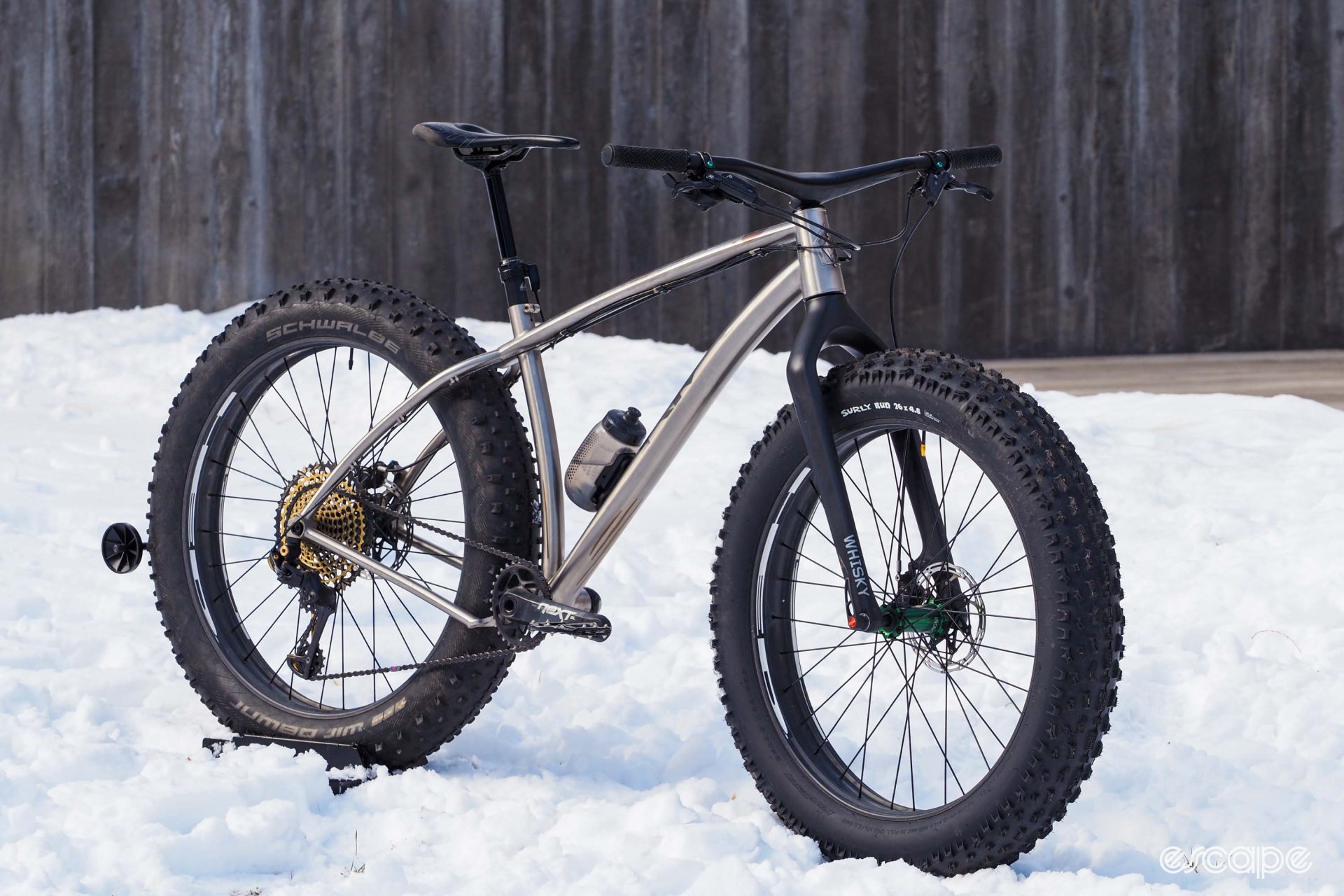
Dan called that bike the Grizzly, and although he wasn’t necessarily planning to start a bike company at the time, he decided on Rise as a brand name. Aside from what turned out to be a too-short rear end, it was almost exactly what he wanted, but an annoyed moose had different ideas.
“I got to the top of a climb out of breath going like walking speed, heard a noise and looked, and right there was a moose, two feet away from me,” Dan recounted. “He knocked me off the bike, I jumped up and I was basically holding this tree circling around for maybe 20 seconds, and then it gave up. I don’t know if it tripped or attacked the bike, but it kicked the top tube, tore 12 spokes out of the front wheel and broke the carbon rim, and blew the tire off. It just wrecked the thing in the space of about a quarter of a second.”

Dan – and his dog that was riding with at the time – were thankfully ok, and the bike was eventually salvageable. While he was figuring out how to fix the mangled top tube, he and Craig developed a second-generation version with slightly adjusted geometry, a more elegant-looking chainstay yoke design, and a wider rear end as fat bikes had finally settled on 197×12 mm hub spacing instead of the 177×12 mm dimension he was running originally.
Progress.
But maybe he should have called that bike the Moose.
Inspiration from tragedy
Dan started dabbling with 3D printing after some nudging from one of his best friends from graduate school, whom he’d continued to work with professionally since then.
“Nick was the first person I knew that got into 3D printing,” Dan said. “He was always curious about every little thing. I talked to him every day. We would literally Skype for five or six hours every day for years and years and years. And half the time I’d hear his 3D printer in the background. He was always designing these 3D puzzles where all the pieces have to go together instantaneously. He was just always doing random things like that.”
One day, a package showed up on Dan’s doorstep. Nick had upgraded to a fancy new 3D printer, and figured Dan might be able to use his old one.
“Nick taught me how to use software for designing things on a 3D printer, this program called OpenSCAD, which is a mathematical way of designing something. So rather than clicking a thing to make a circle and dragging it to your size, you’d have to type something and put in the numbers that you want, and then you have to locate it in space. I didn’t really do that much with it, honestly. I printed a couple of little things. [My son] broke a propeller on his toy helicopter and I printed him a new propeller. But otherwise, I was like, ‘I don’t really see the point of this,’ and I kind of left it at that.”
Friends are bonded by all sorts of things – hobbies, personalities, careers, and so on. Riding bikes and computer programming was a couple of the things that linked these two together, but another was math. Serious math.
“We used to do these things – they were his idea – called the Euler Project [Leonhard Euler was a Swiss mathematician who is widely considered not only the greatest mathematician of the 18th century, but one of the greatest ever]. He’d pick these problems, and we’d solve a bunch of these. I’m not motivated to do that kind of thing on my own, but he was. But it was also really fun working with him on them. It was like the stuff that we did day to day at work, but harder, more interesting, self-motivated. We’d just collaborate on these things and had a really good time working on it. And those Euler problems are seriously hard (some of them anyway). I have four or five other friends with PhDs in physics or astronomy from Harvard, but none of them are any help. Nick was something else.”

Careful readers will note that the previous passages reference Nick in past tense. Tragically, he passed away unexpectedly in 2020.
“I found out from his wife on a Monday morning; happened the day before. I’d meant to call him that day. And I was like, ‘Yeah, I’ll just talk to him tomorrow. I don’t need to bother him on the weekend.’ My dad had died about six months before, but losing Nick was the hardest thing I’ve ever had because he was a unique person for me for my mathematical side. He was the only friend that I really associated and kind of connected with in that way. He was the only one who I really gelled and fit in on that level, where I would call him from a bike ride and be like, ‘Hey, I have this idea of how we’ll solve this Euler problem,’ and by the time I got home, he’d coded it and figured out some other thing and we’re on the next problem. It was just this really amazing thing. I dream about the guy periodically. He’s the guy I thought, when I’m 80, I’m going to be chatting with him about the things we’ve done. It wrecked me for a long time.”
Dan said that after Nick’s passing, he didn’t want to do much of anything except get on his bike. Riding is interesting like that. It doesn’t necessarily provide answers, but there’s something about the way it helps you filter out the noise and at least helps provide some clarity. Or sometimes it just gives you an opportunity to think about nothing at all.
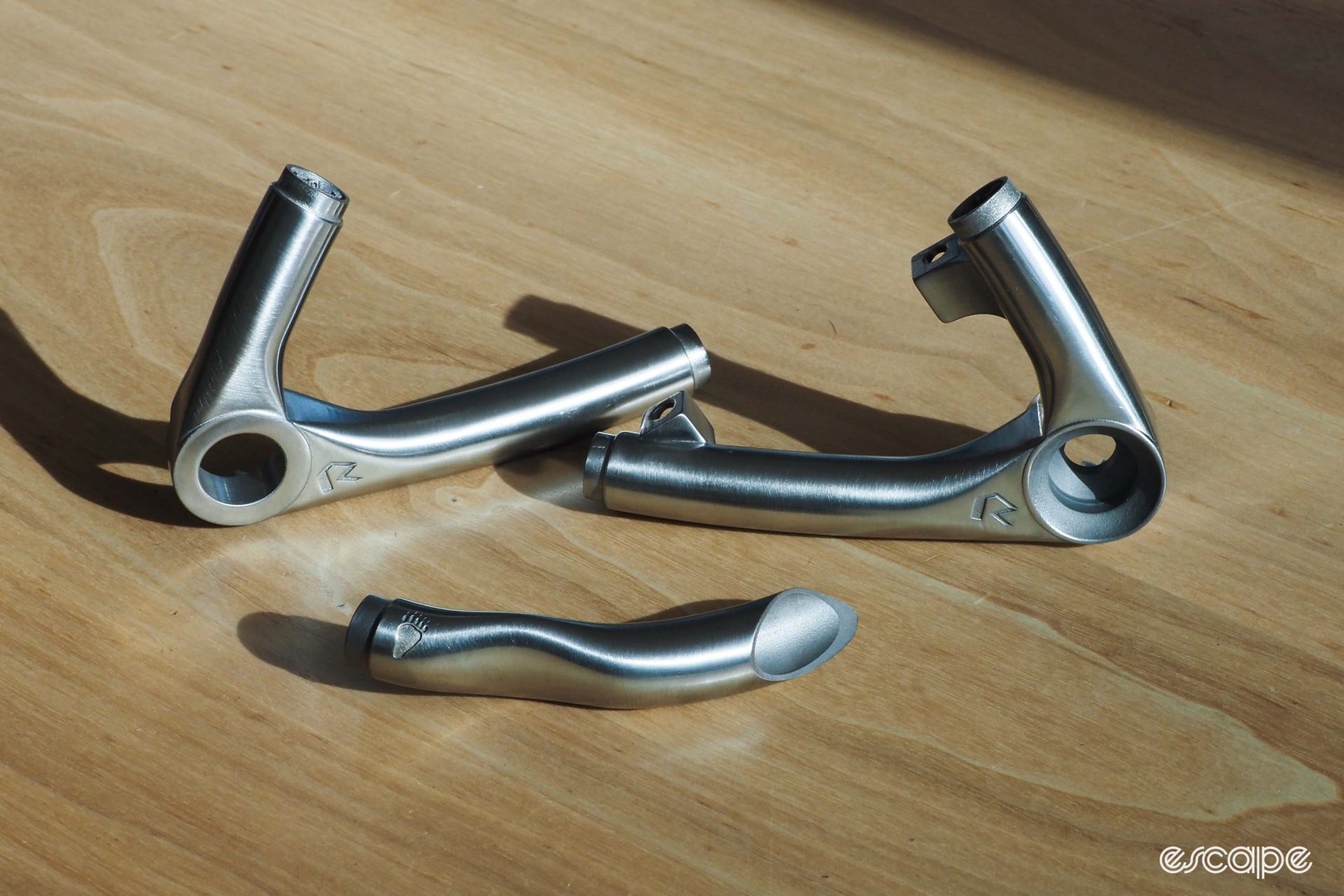
“At some point I was chatting with Craig in early 2022 and he said, ‘If we ever build more Grizzlies we should think about making a chainstay yoke. Maybe even try to get it 3D-printed.’ That was kind of my trigger. I thought, ‘Nick loved 3D-printing; I should see if I can design something.’ And then because of the nature of the software, it really became a bunch of Euler Project-like coding and math problems: write the code to generate the polyhedron that has this shape. I didn’t want to go the big software package route because a) I didn’t want to spend the money, and b) I wanted to do the ‘Nick’ way. It was all this big, giant, complicated problem that took me ages to write the code for it. It probably would have been easier doing it [with surface modeling], but the thing is, I don’t really know how to do that.”
Dan got to work, and like with other titanium brands that were adopting the technology, he and Craig recognized that printing certain sections of the frame could provide a number of benefits, such as reducing heat-related distortion at the brake mounts, directly incorporating internal cable routing ports, and increasing tire and drivetrain clearance. By the time he was done, Dan ended up designing a set of printed UDH-compatible dropouts, a driveside chainstay semi-yoke, and a head tube.
After first trying to have the parts made locally, he eventually had them outsourced to a facility in China, who was not only happy to make the components for him, but also did all the sanding and finishing work so they matched perfectly with the rest of the frame.
Dan is quick to point out, however, that the latest version of the bike is far more than just those 3D-printed pieces.
“[Craig] loves riding fat bikes, and he’s been my collaborator on these bikes with every detail; they wouldn’t have gotten anywhere without him. The 3D part work I had to do on my own, but he’s the one that brought them to life. He’s an incredibly talented and perfectionist guy. I don’t think there are that many builders who could make this bike, particularly not the way he does.
“The big two-inch down tube, and doing the top tube as a monostay – those were all Craig contributions,” Dan continued. “I didn’t know it was doable. He gets one shot at the seat tube miter/plunge with no margin for error, no way to take another small adjustment cut. This sort of thing – willingness to challenge limits, and to pull it off perfectly first time – is where I think he really separates himself from others.”
Rise, Grizzly, rise
All of that brings us to the current generation of the Grizzly, and the bike Dan is riding today.
It’s a gorgeous machine with tastefully anodized graphics that Dan did himself. Craig Sata is still doing the welding. Despite the massive 26×4.8”-wide tires (Dan says it’ll also fit 27.5×4.3”-wide ones), it’s somehow still perfectly proportioned aesthetically. The lines are clean and purposeful, and the 3D-printed parts are so tidily integrated into the rest of the frame that the casual observer would be none the wiser. You can certainly find them if you look, but you’d also have to know what you’re looking for. The geometry is thoroughly modern, with a 67.5° head tube angle, a 76° seat tube angle, and a generous 455 mm reach on Dan’s medium size. Heck, it’s even suspension-corrected should you decide to bomb through that track someone carelessly postholed earlier in the day.
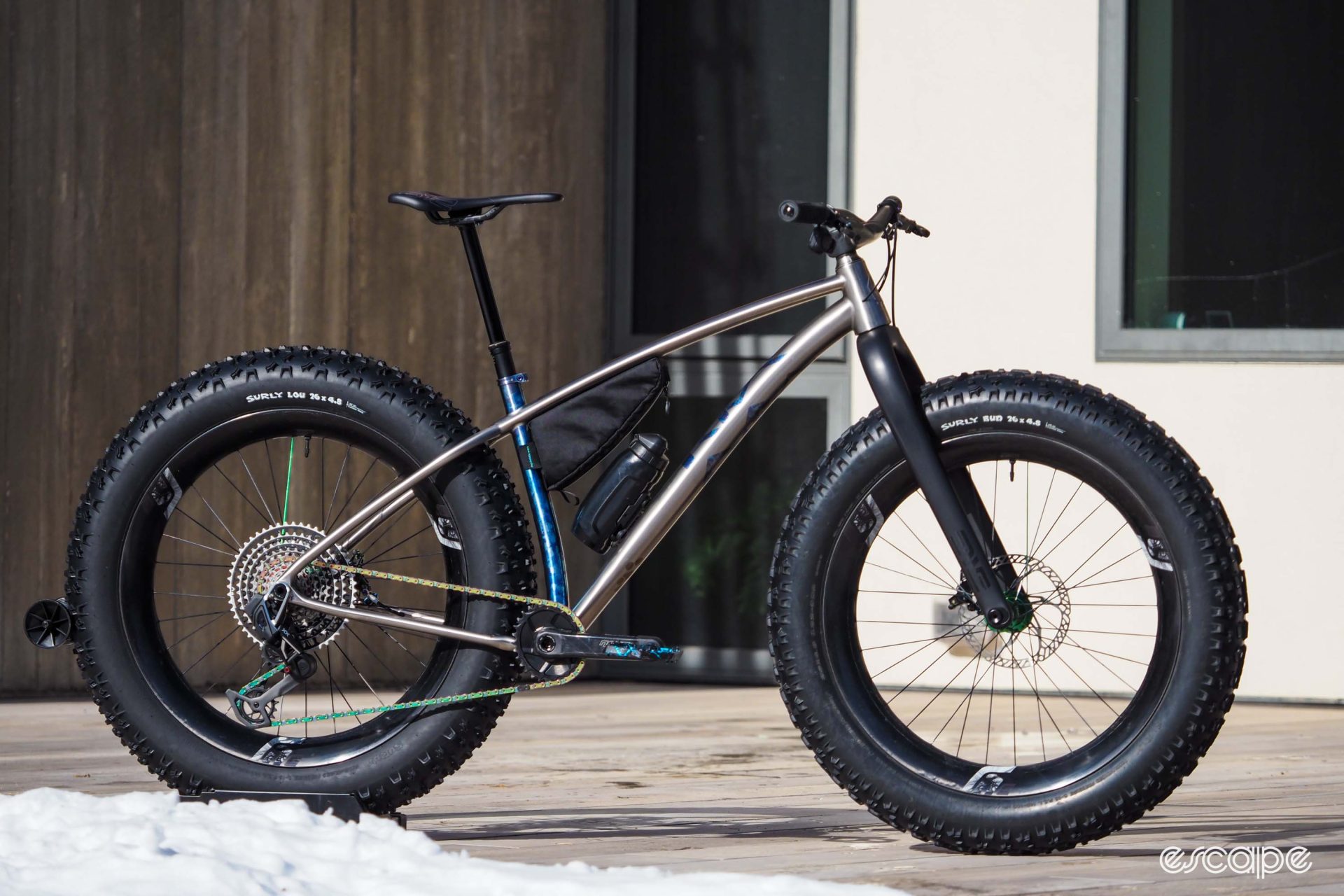
It’s also unusually light for a fat bike, which perhaps shouldn’t be surprising given the high-end build. As shown here (but without the bottle and mini-pump), it’s just 12.14 kg (26.76 lb). Perhaps more to the point, it’s finally exactly what Dan was seeking when he bought that Twin Six back in 2016. It wasn’t Dan’s original intent to develop a bike to sell or establish a brand, but should anyone want to buy one for themselves, he and Craig are willing to make more. Be warned that it wouldn’t be cheap; a complete bike similar to his would probably flirt with the five-figure mark (in US dollars). But I’d venture to guess that for the well-heeled fat bike aficionado who’s been forced to settle like Dan used to, that price tag might just seem reasonable.
Solace
I should perhaps mention that I first met Dan through a mutual friend a while back; more recently than a decade ago, but more than a handful of years. I wouldn’t say that I know him well, but I’d say well enough to know he doesn’t wear his heart on his sleeve, and so for him to share with such candor about his friend, Nick, reveals a lot to me about how much he meant to him. “Kindred spirits” comes to mind.
“The Euler-like nature of [the project] also brought me back to Nick,” Dan told me. “The whole thing became sort of a labor of love. I haven’t tried to do any real Euler problems since, though. I don’t know anyone else interested or capable of doing them, and I never had the heart to struggle with them alone.”
Wintertime fat bike rides can be especially peaceful. There are rarely many – if any – other people about, and the blanket of snow has this way of turning down the volume of the world. Everything seems quieter and more peaceful, and your efforts are often only accompanied by the sound of your tires crunching across the snow, the whir of your chain, and your own breathing.
Dan may not be doing those Euler problems anymore with his friend, Nick, but building that bike was maybe his way of keeping his friend with him during those moments when he’s alone with his thoughts in the wintery woods. There’s an anodized graphic on the underside of the bottom bracket that depicts the first Euler problem they solved together. To the casual observer, it kind of looks like Tetris.
Most people will never see it, but Dan knows it’s there.
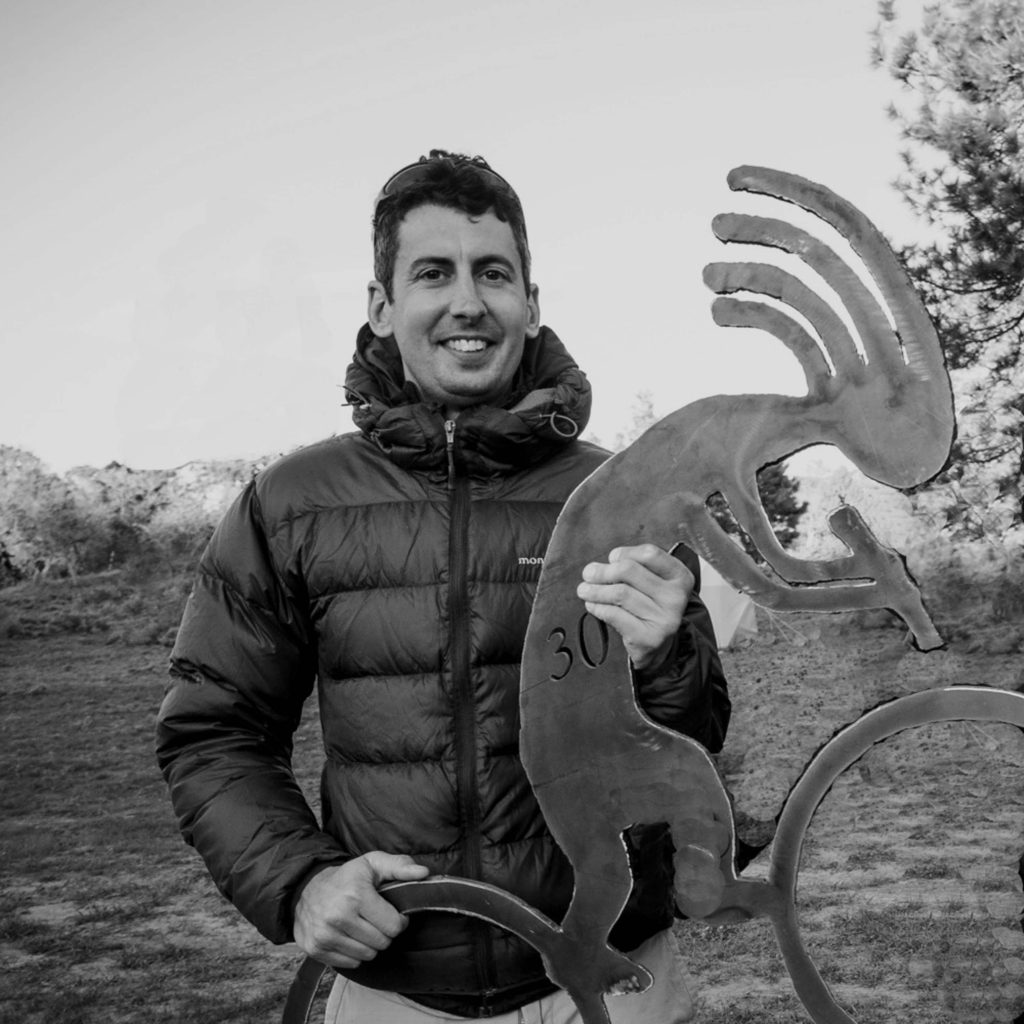
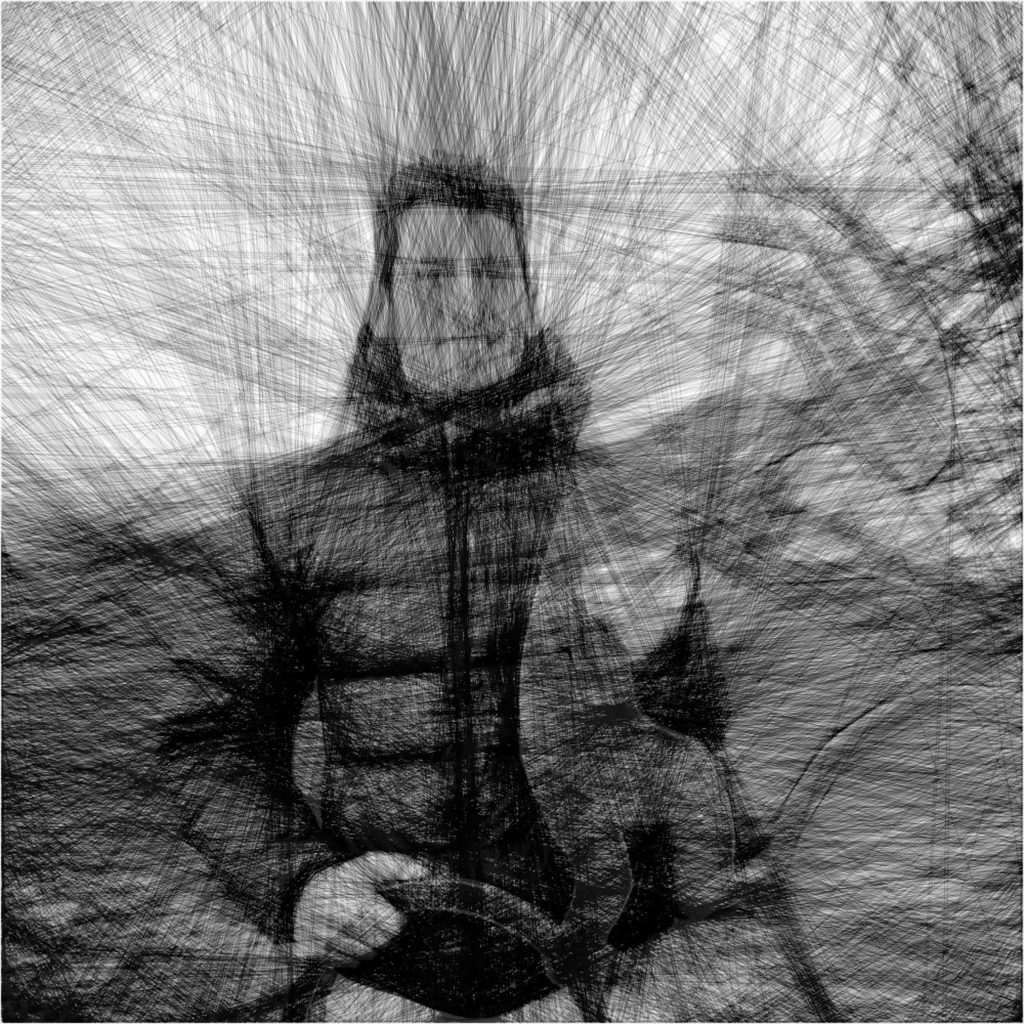
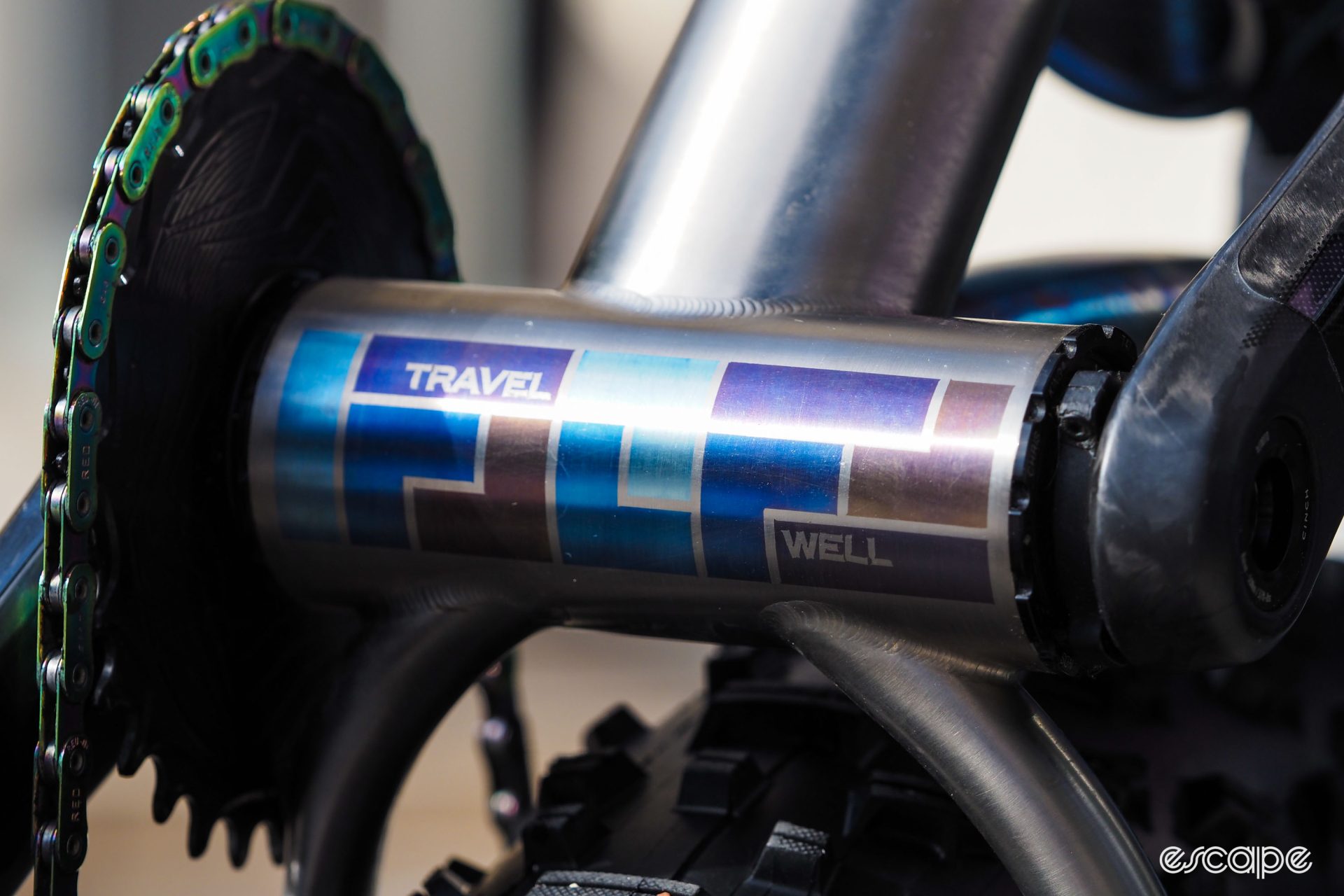
Whose woods these are I think I know.
His house is in the village though;
He will not see me stopping here
To watch his woods fill up with snow.
My little horse must think it queer
To stop without a farmhouse near
Between the woods and frozen lake
The darkest evening of the year.
He gives his harness bells a shake
To ask if there is some mistake.
The only other sound’s the sweep
Of easy wind and downy flake.
The woods are lovely, dark and deep,
But I have promises to keep,
And miles to go before I sleep,
And miles to go before I sleep.
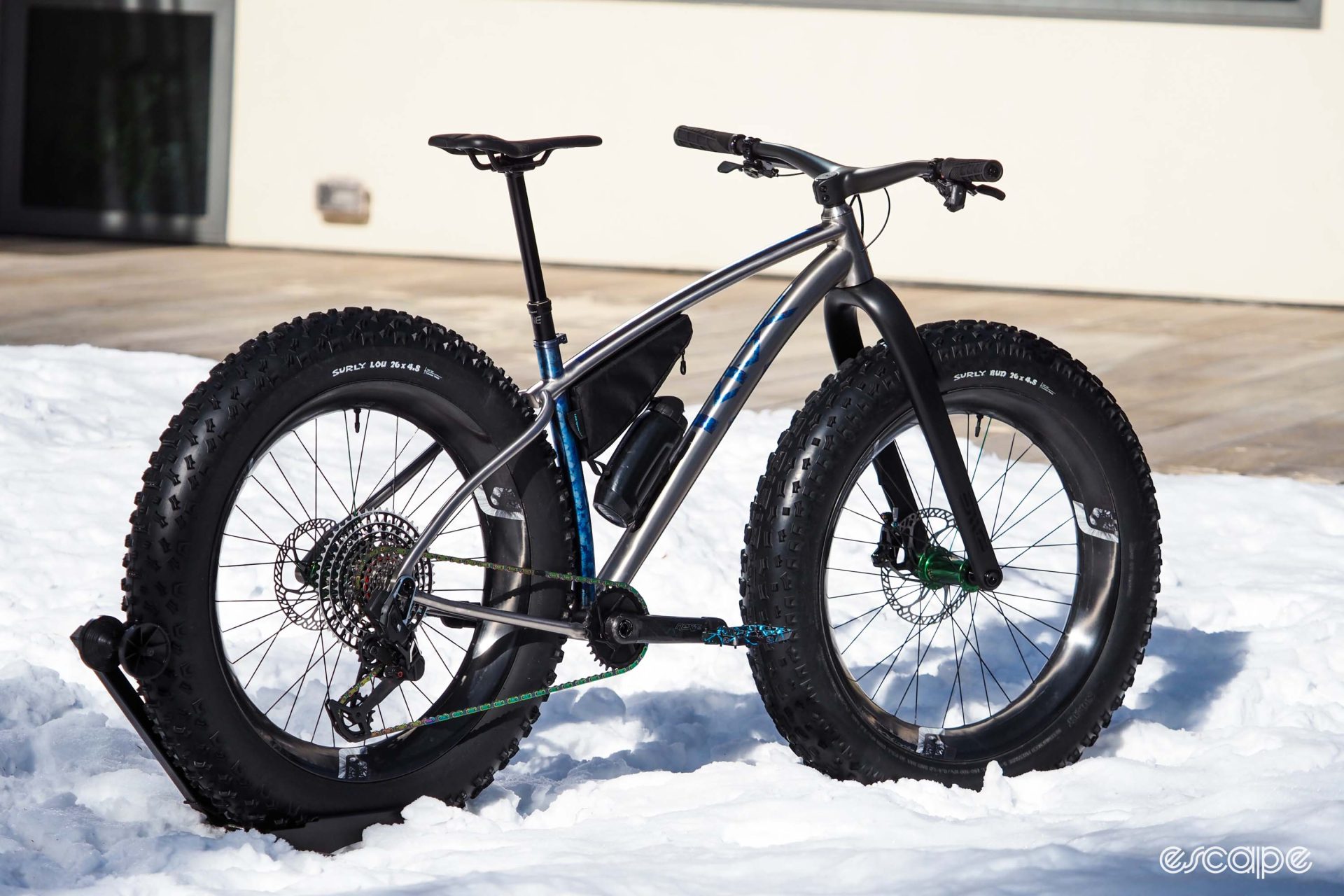
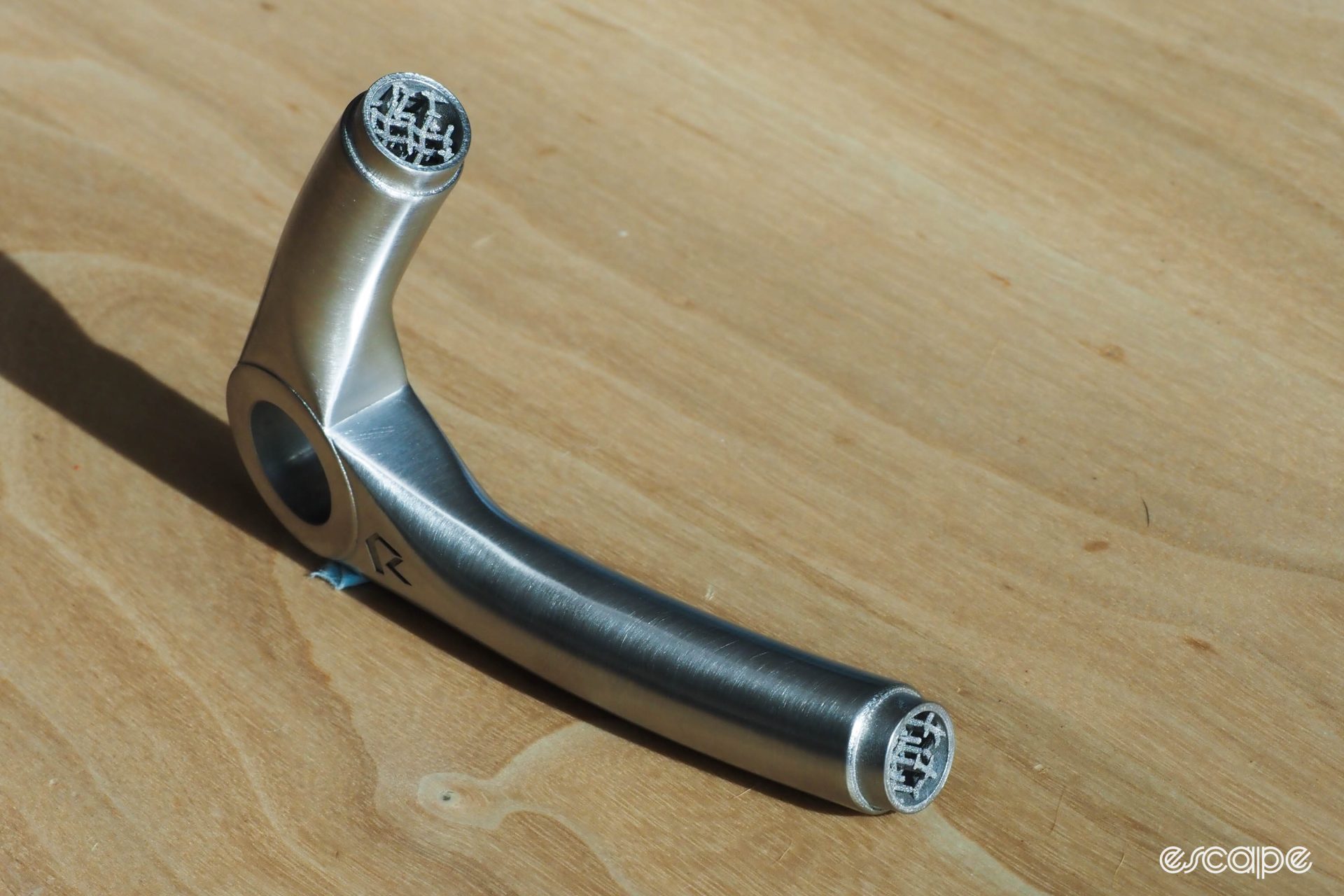
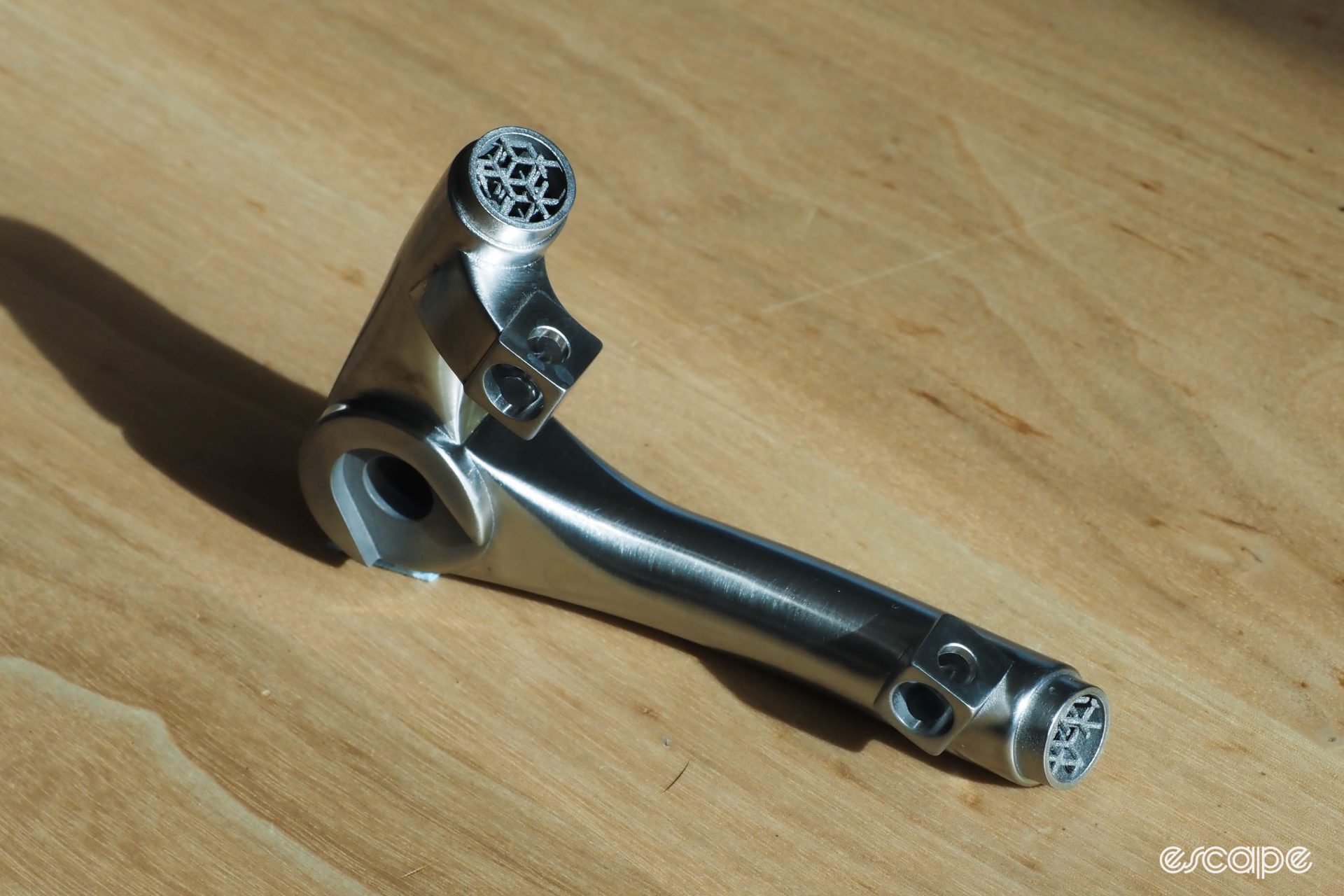
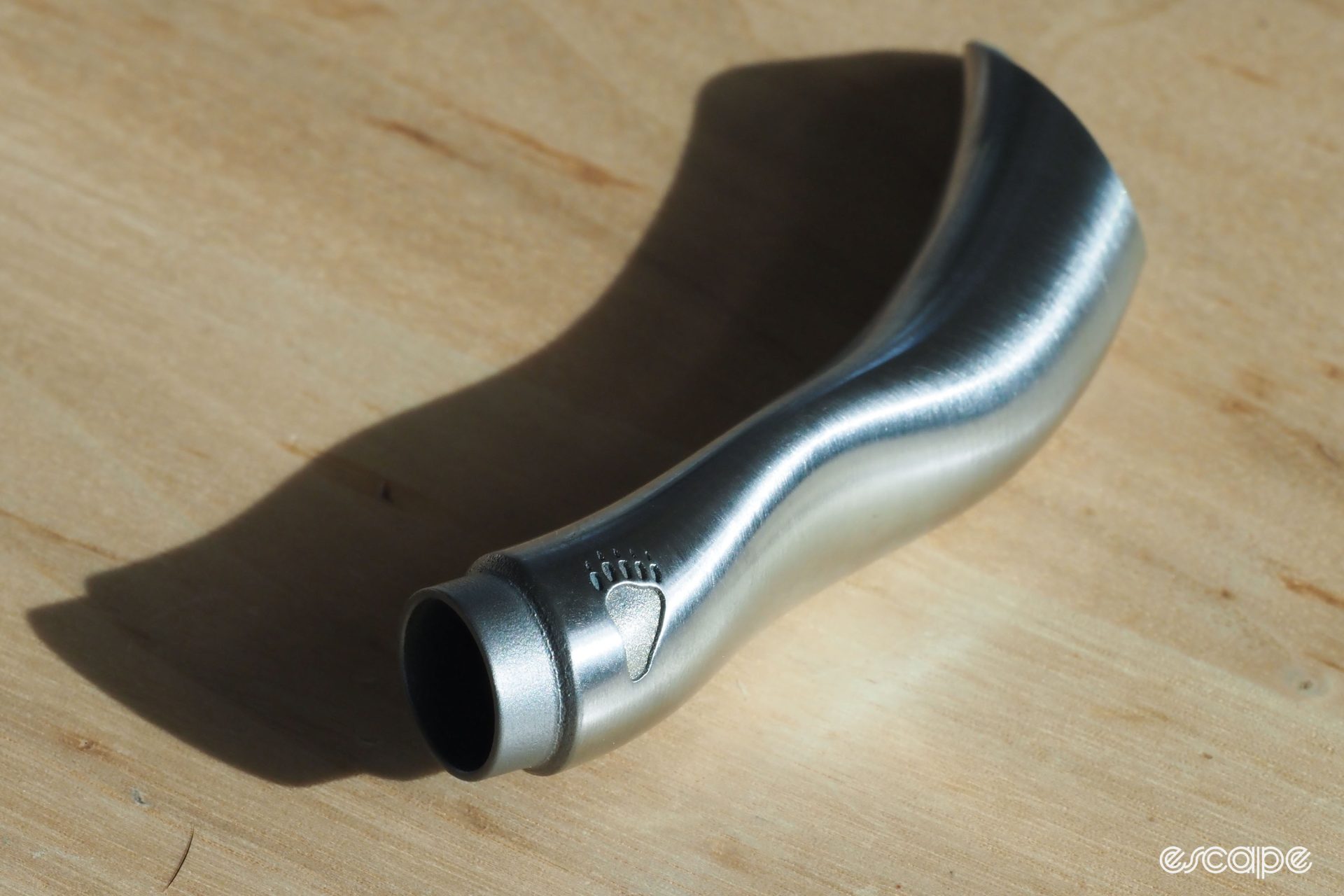
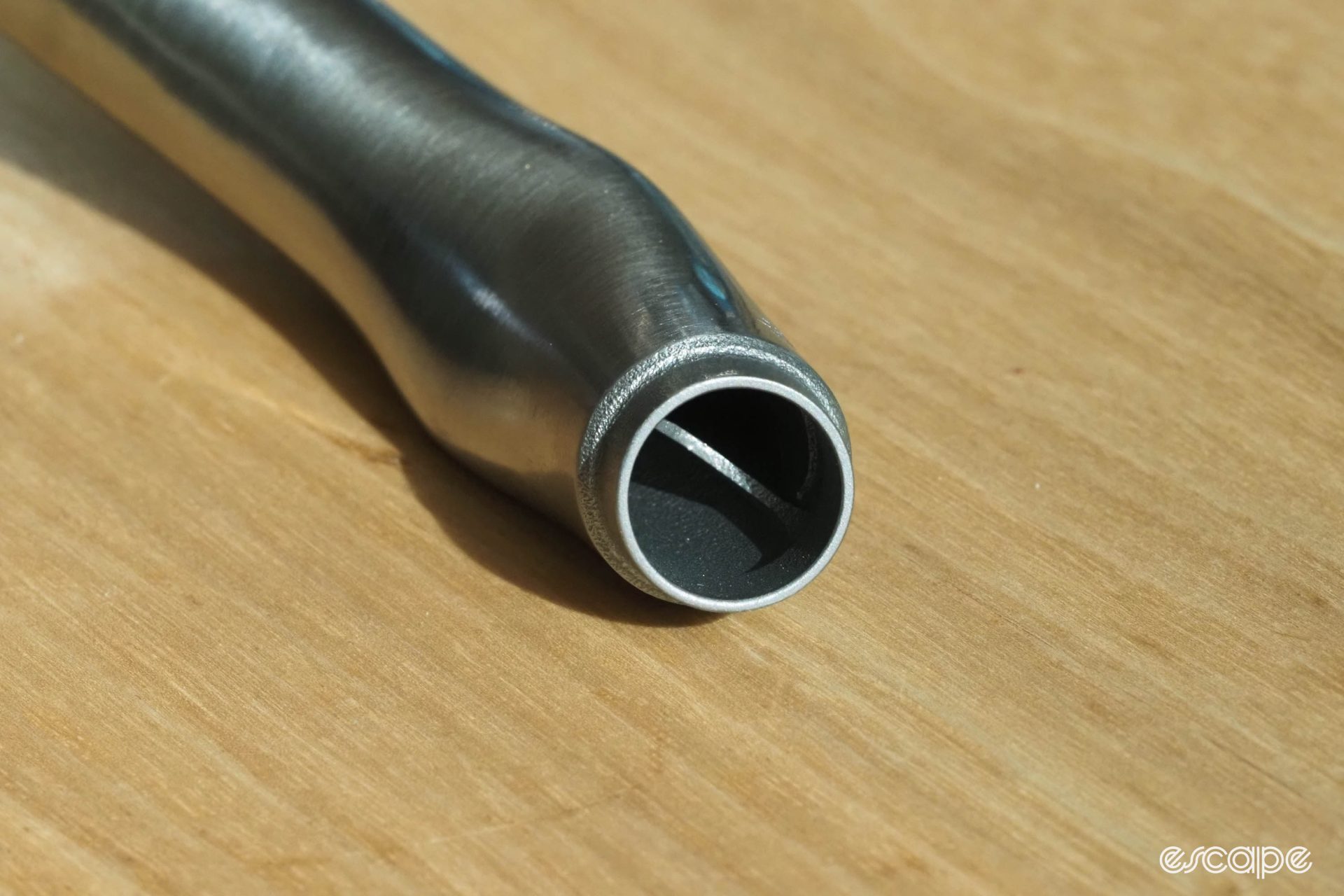
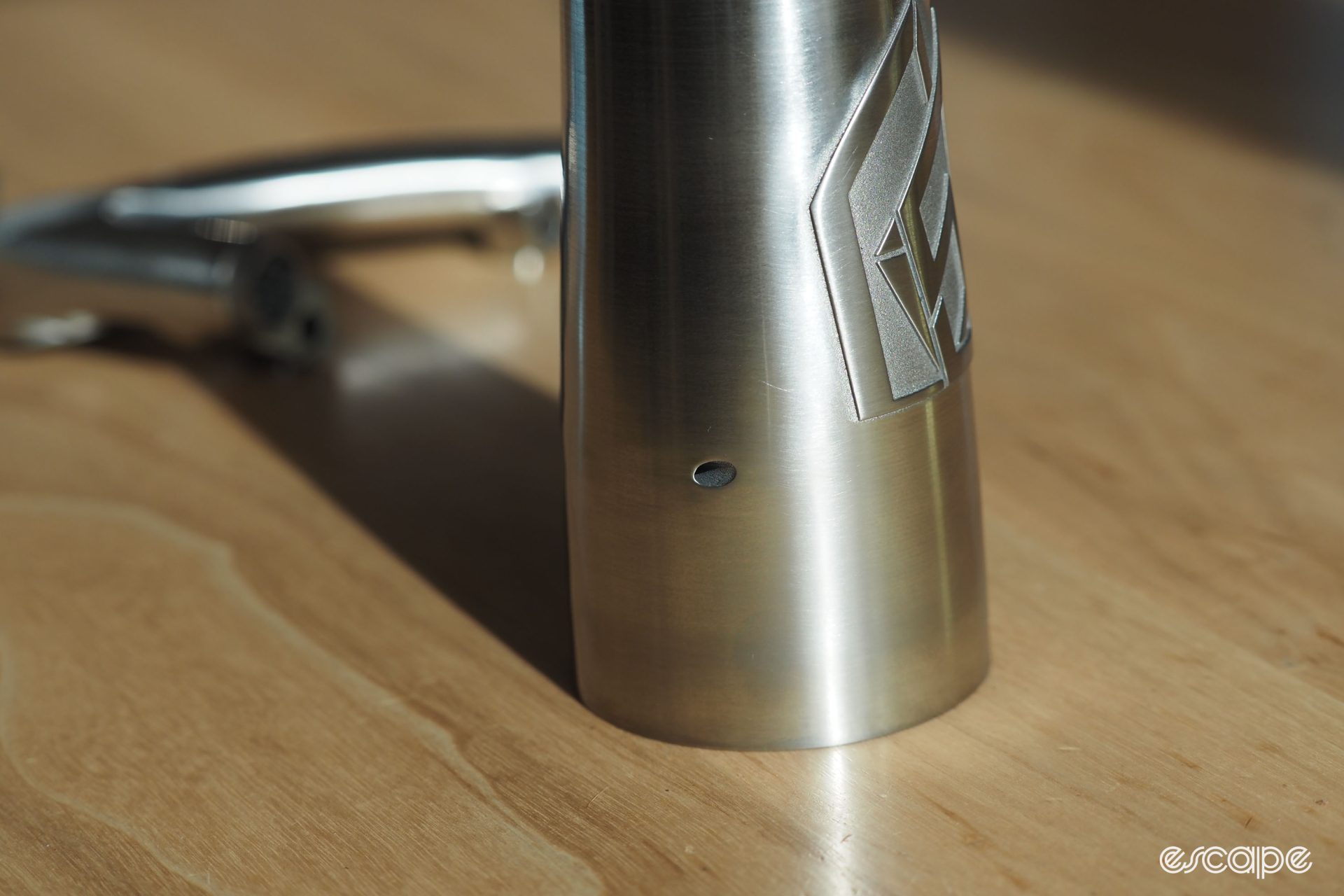

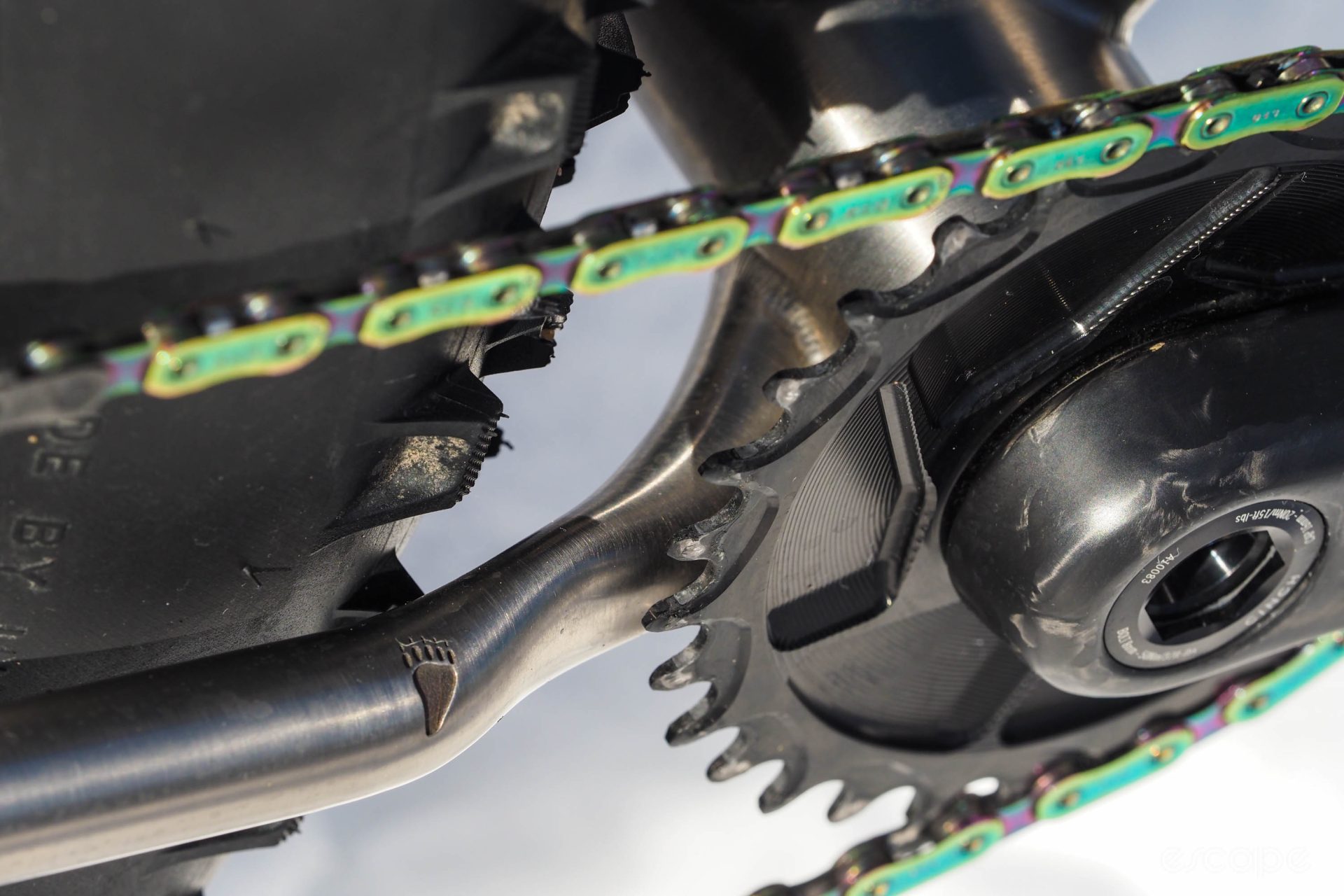

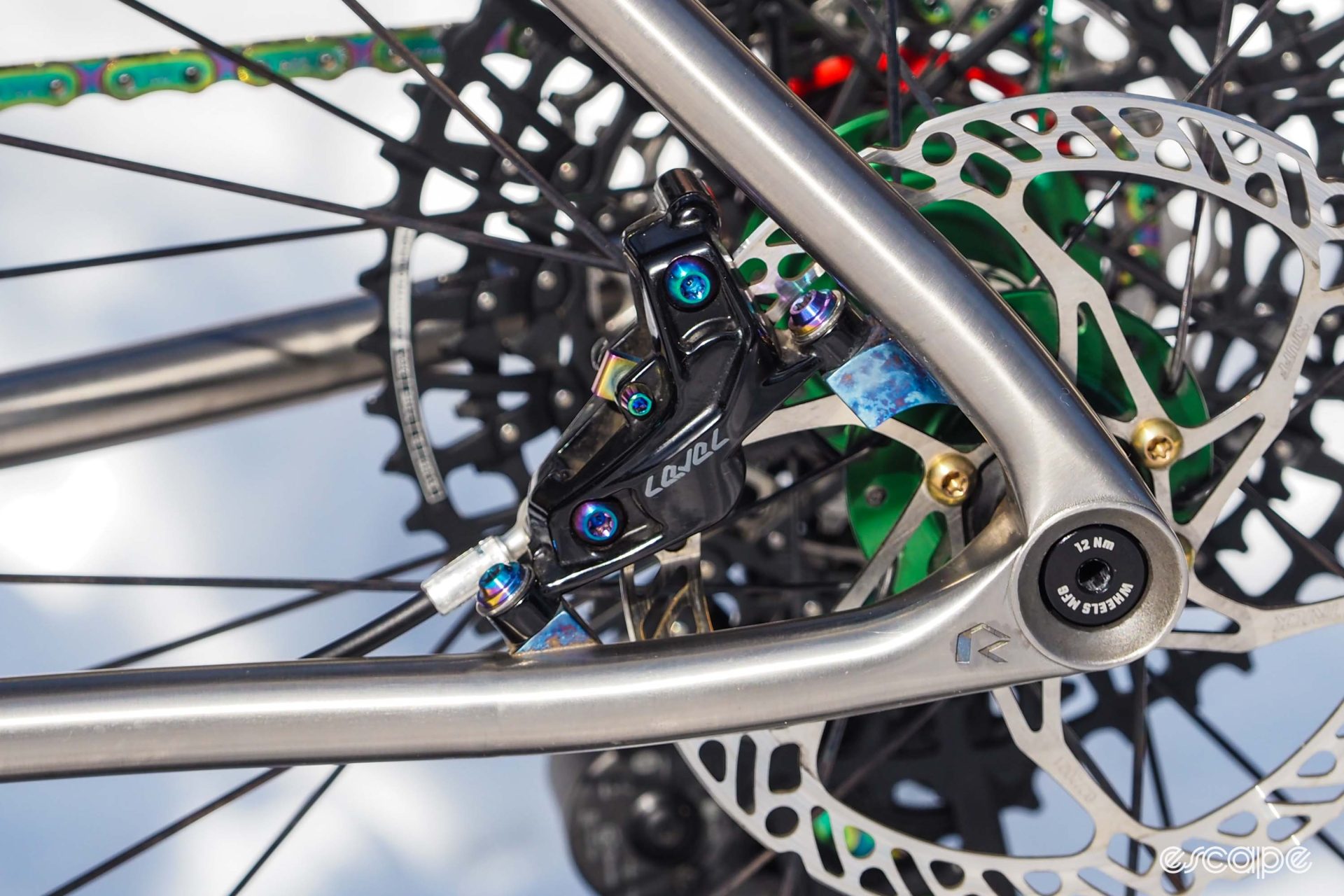
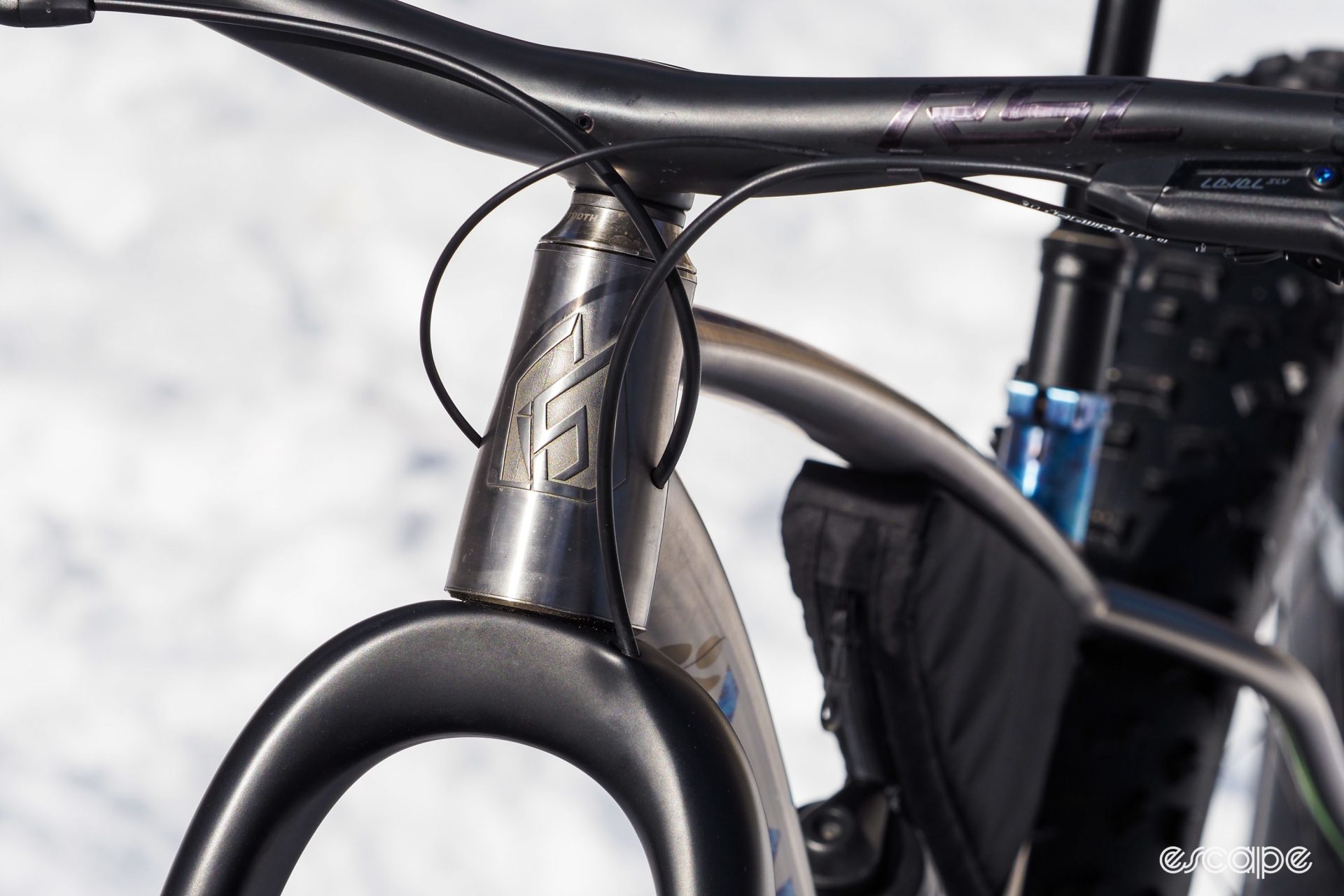

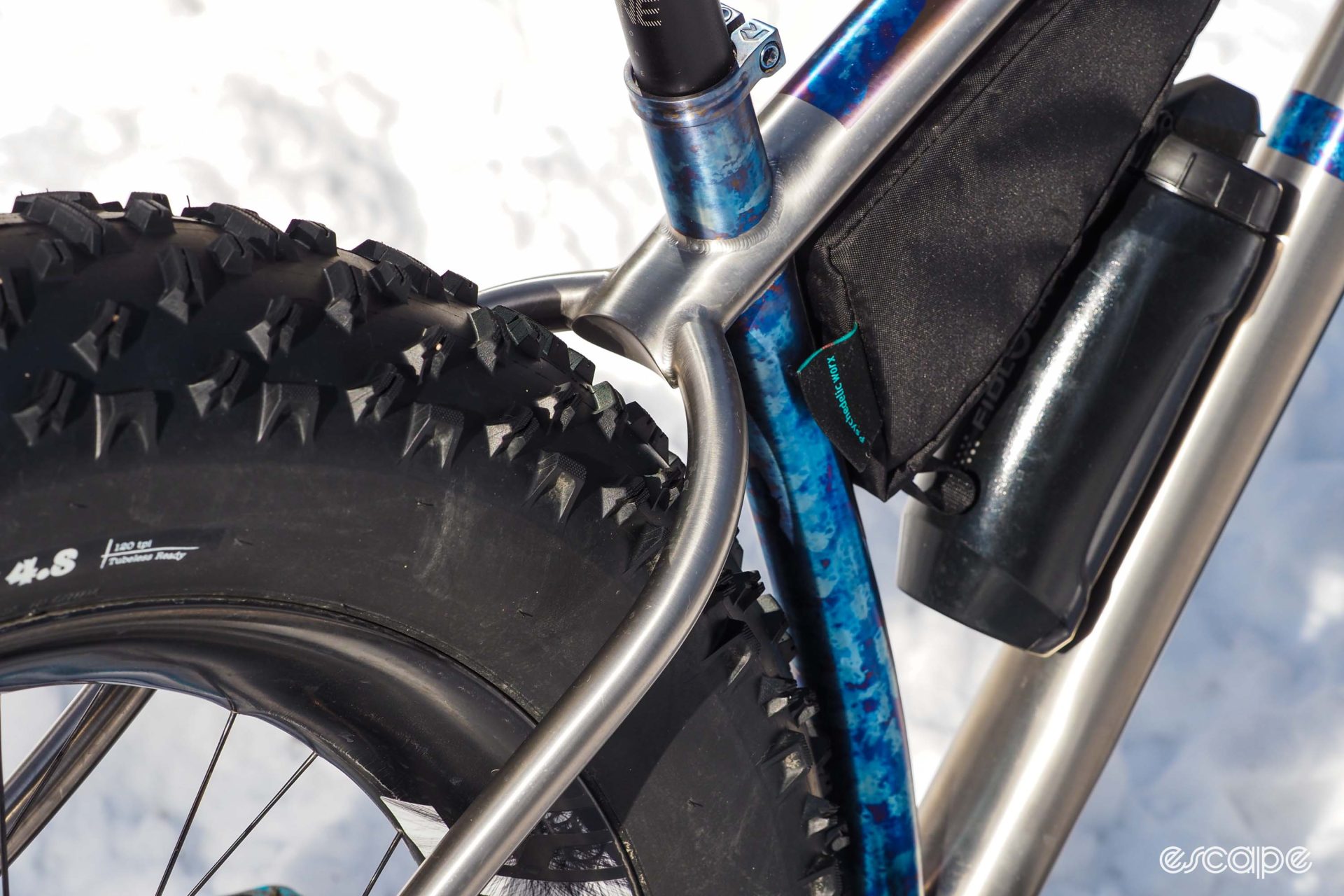



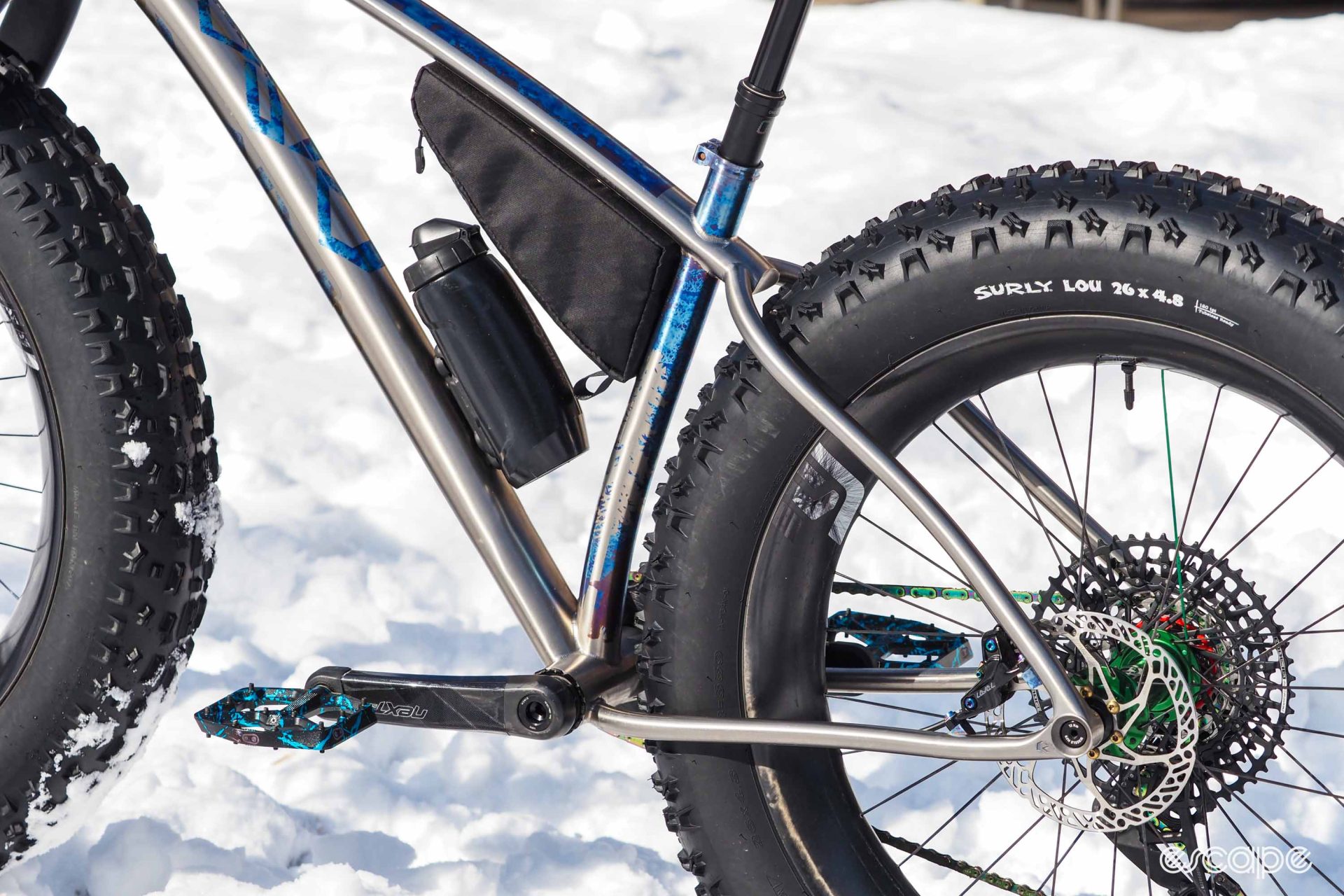

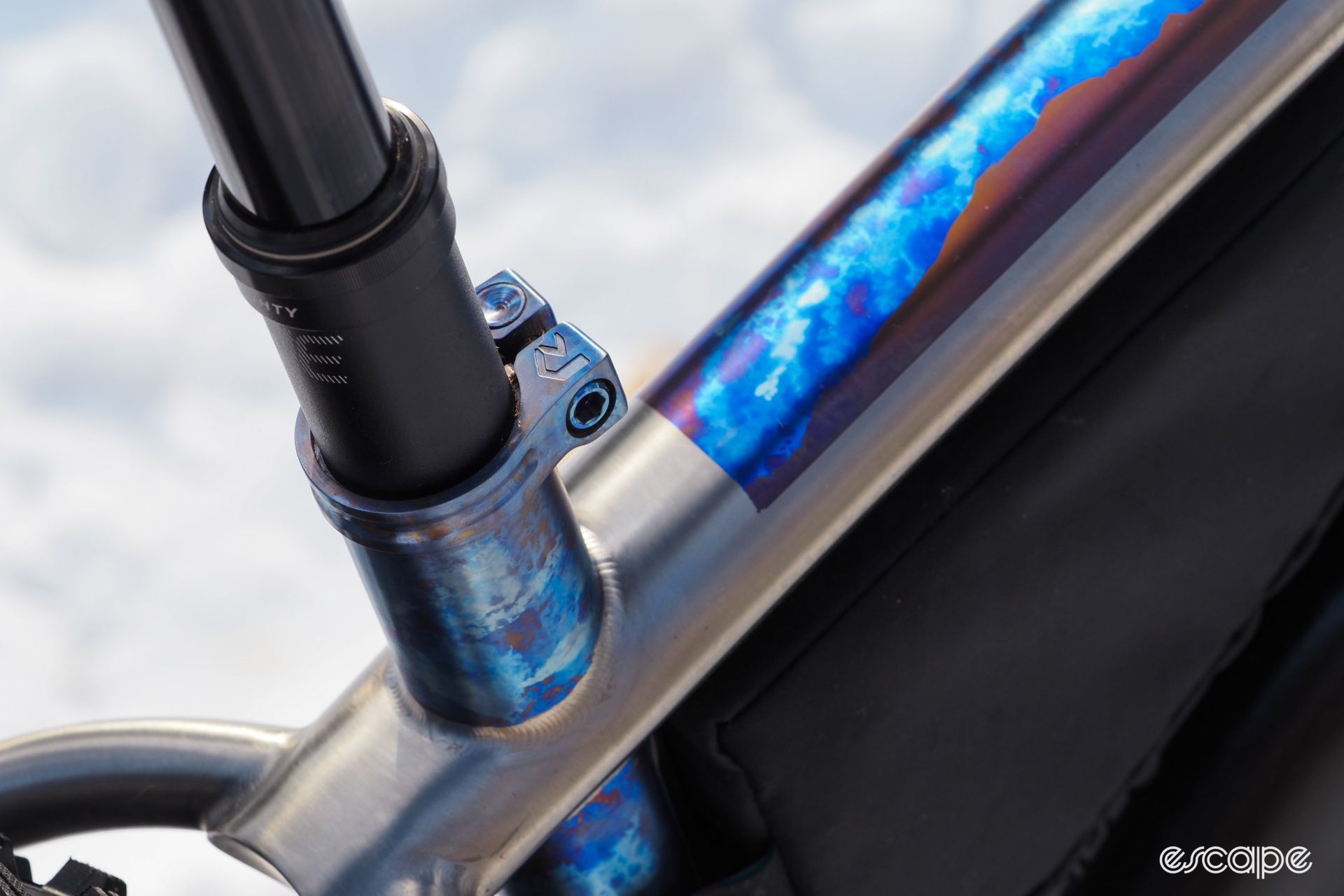


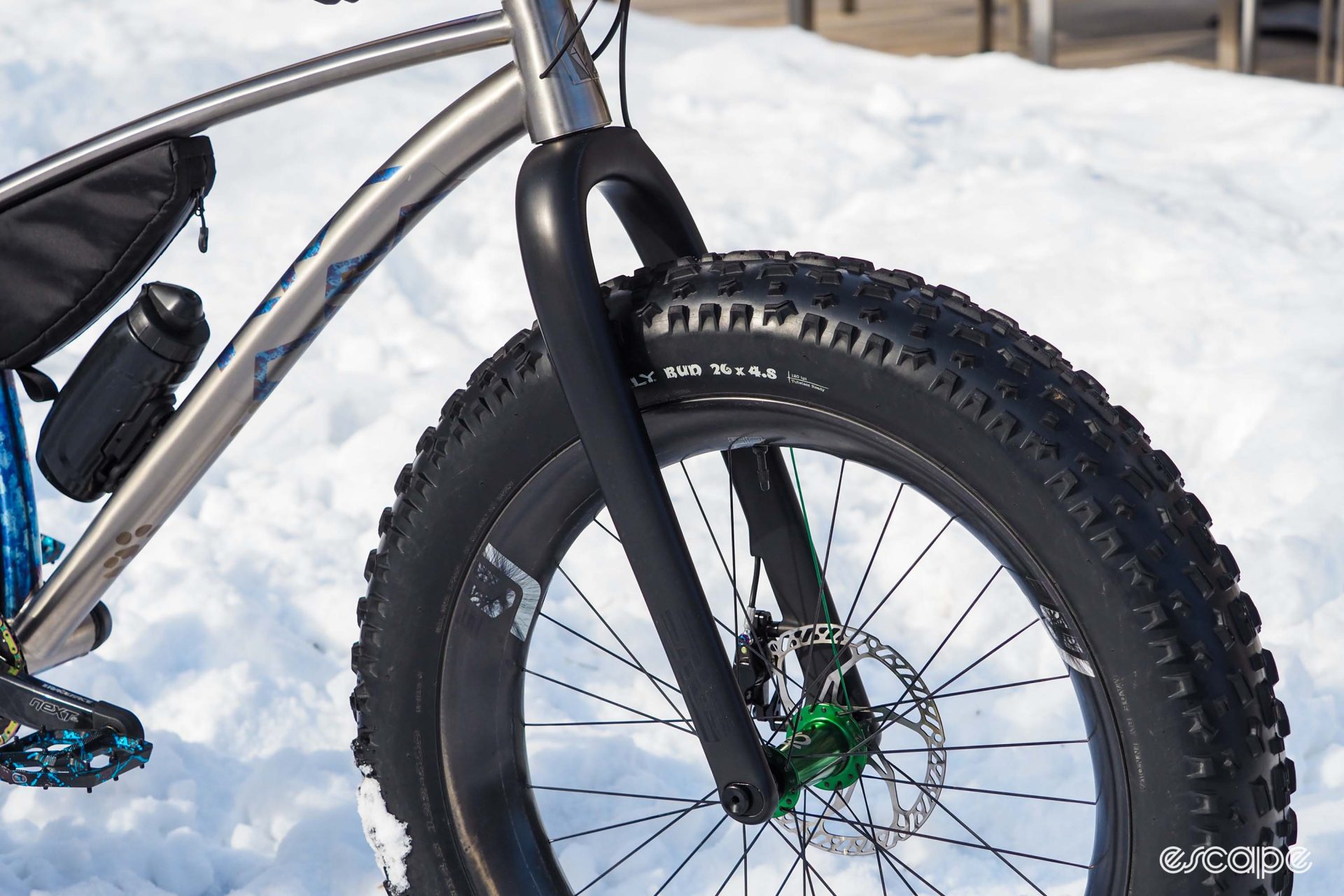
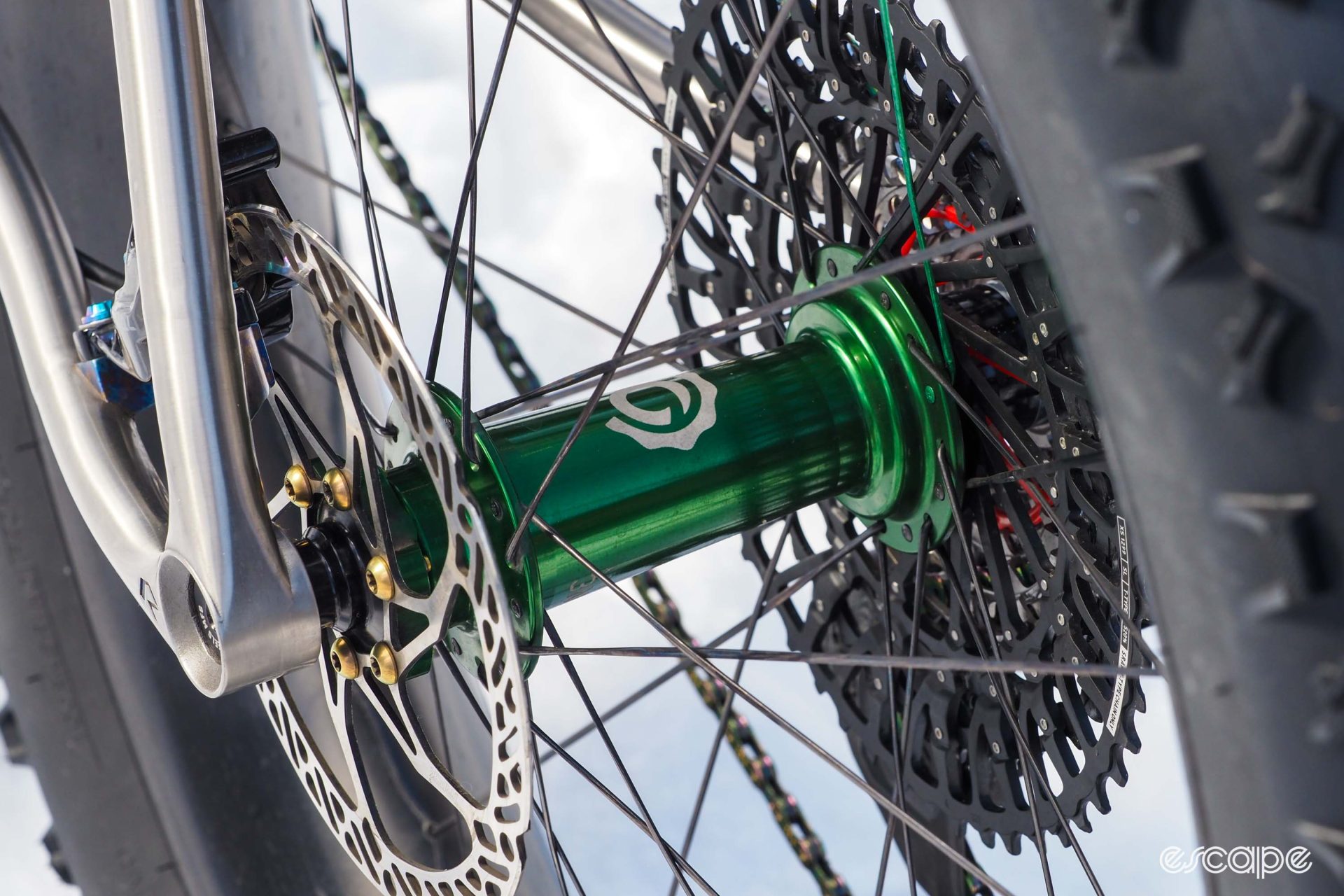
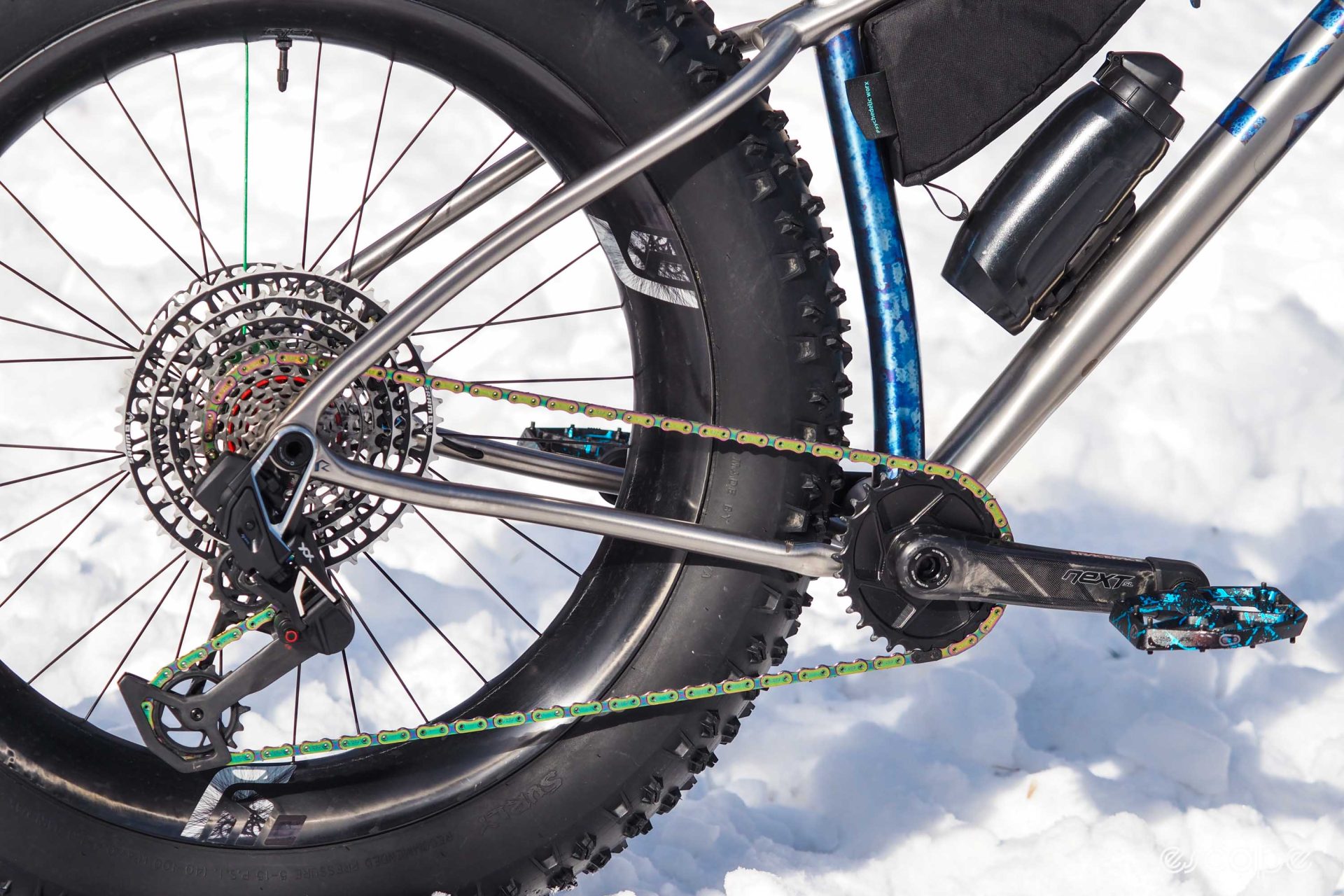
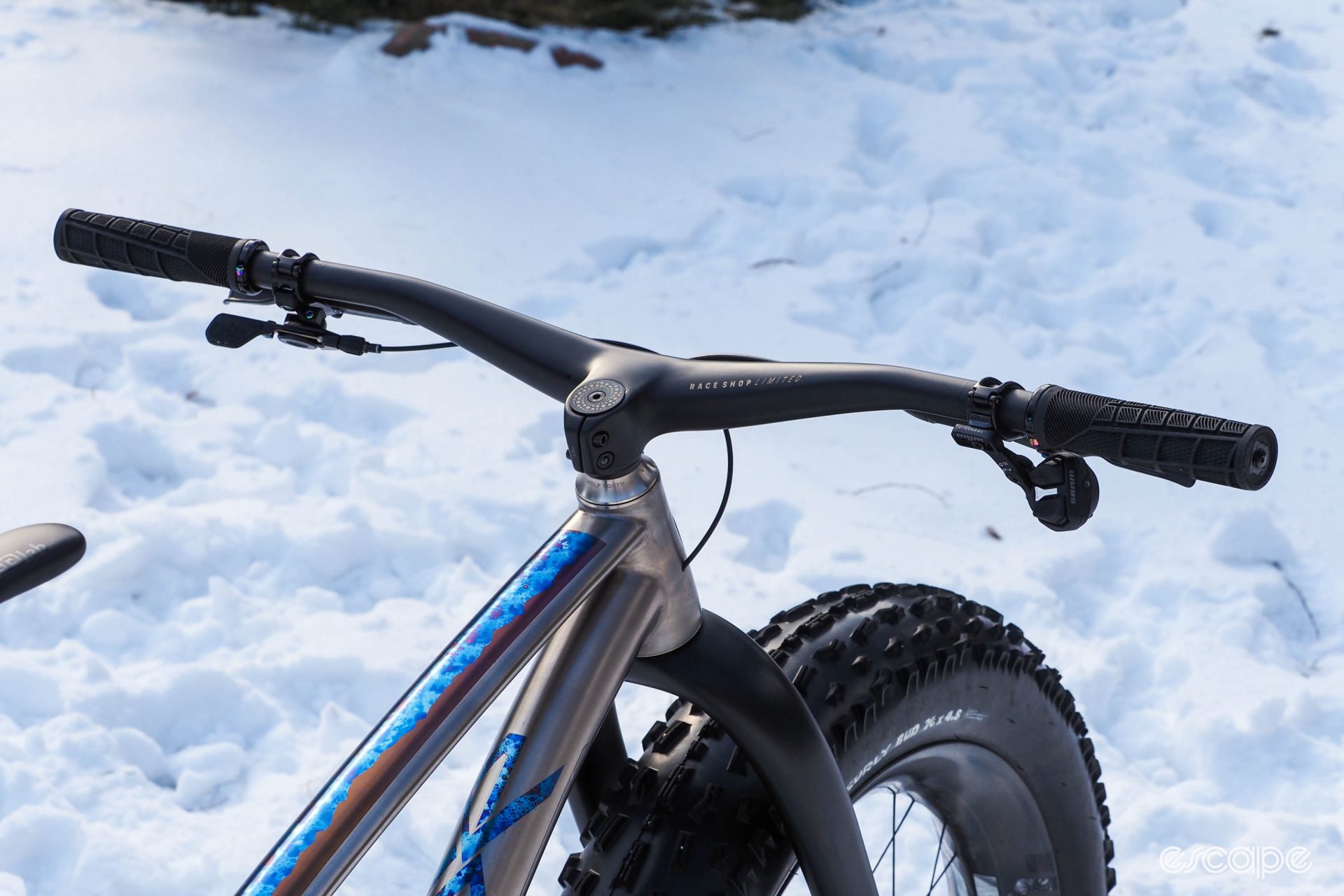
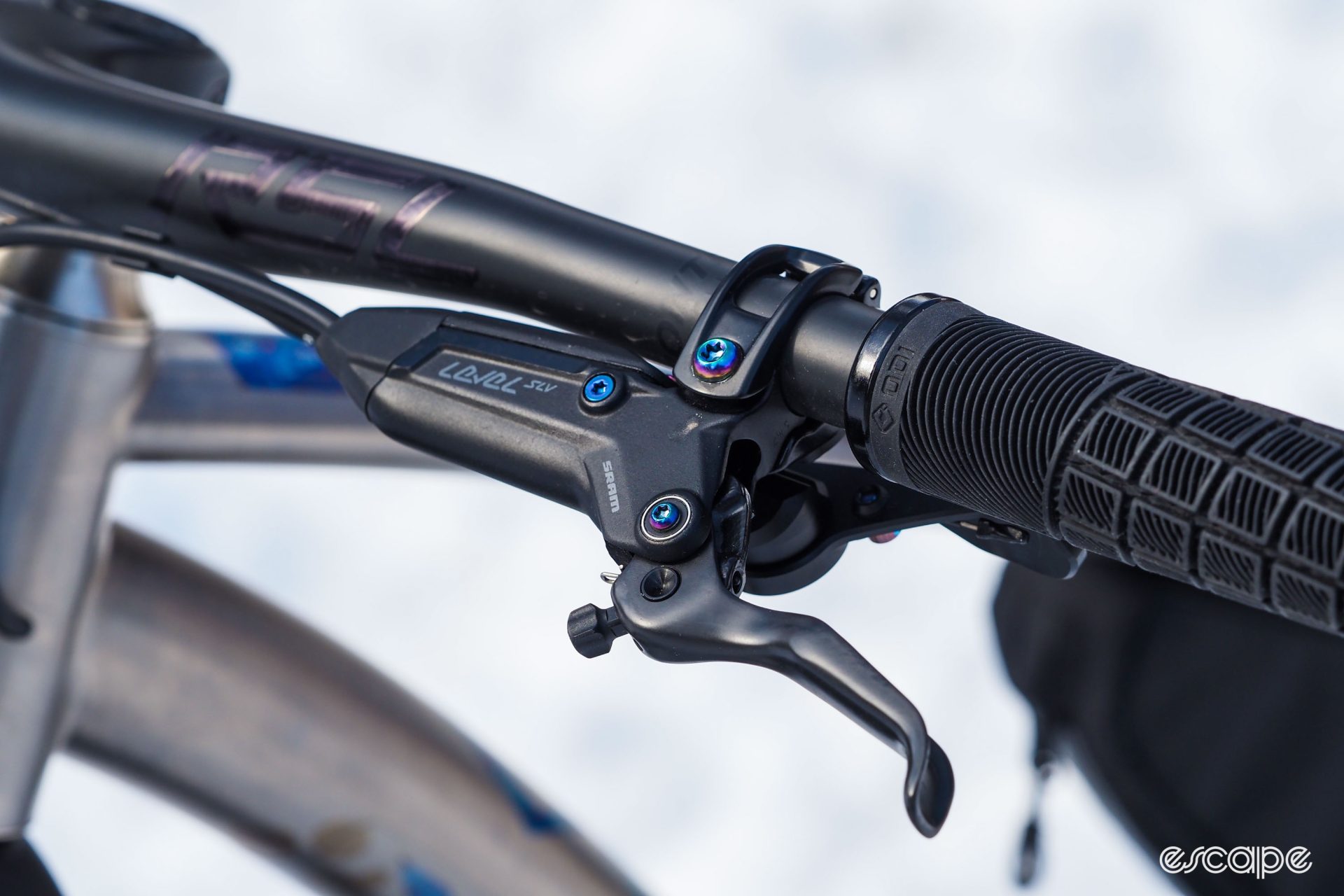

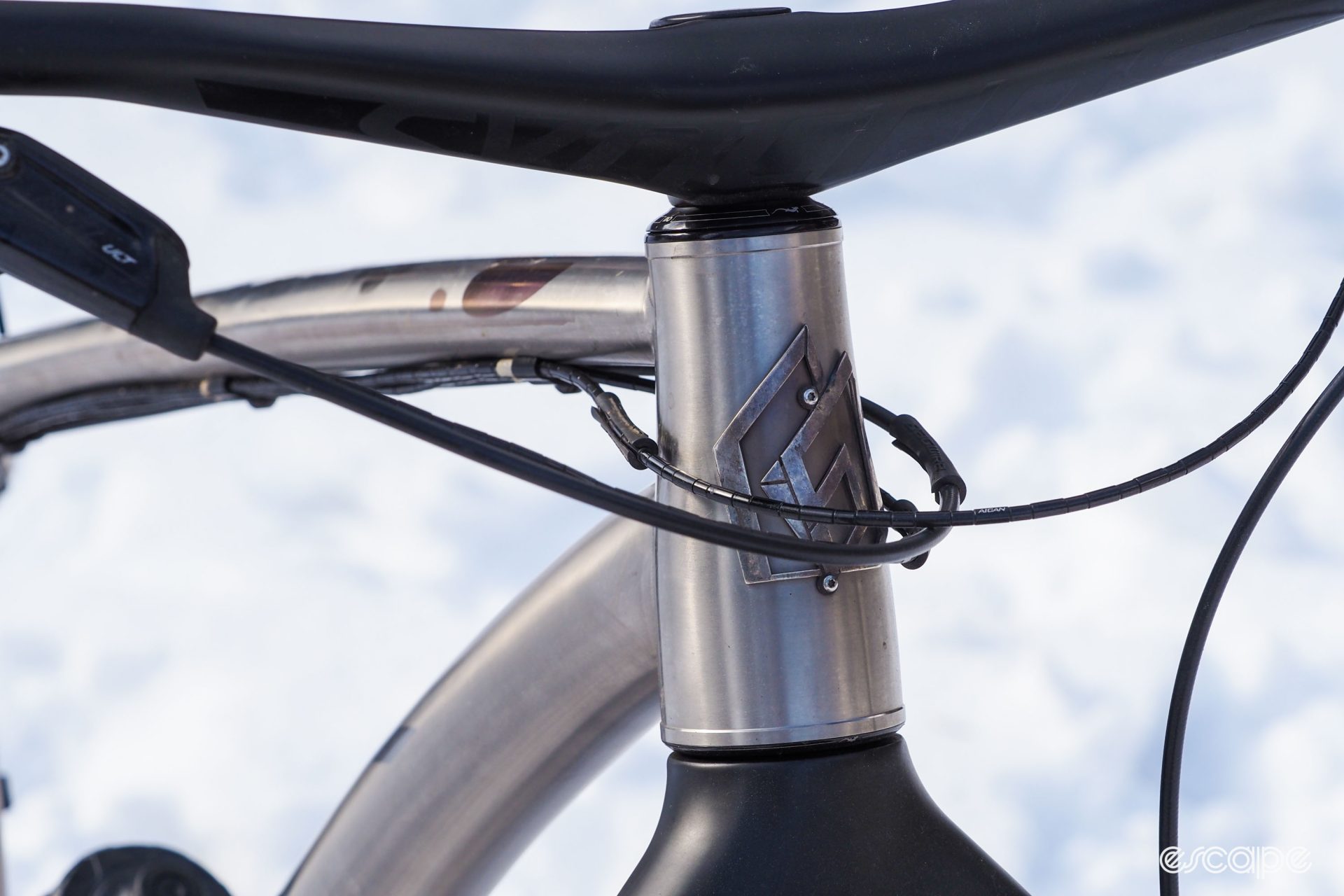



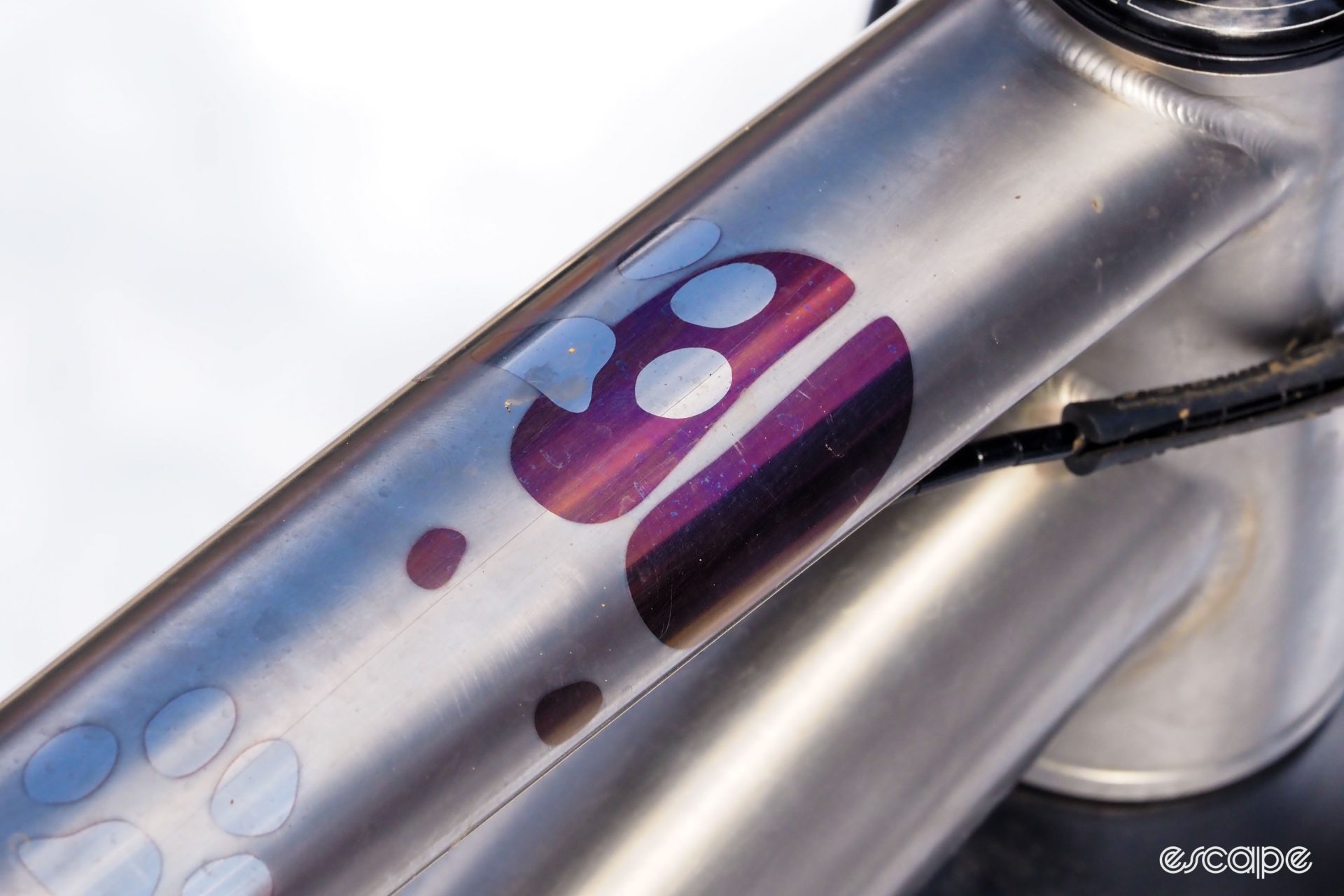
Did we do a good job with this story?


